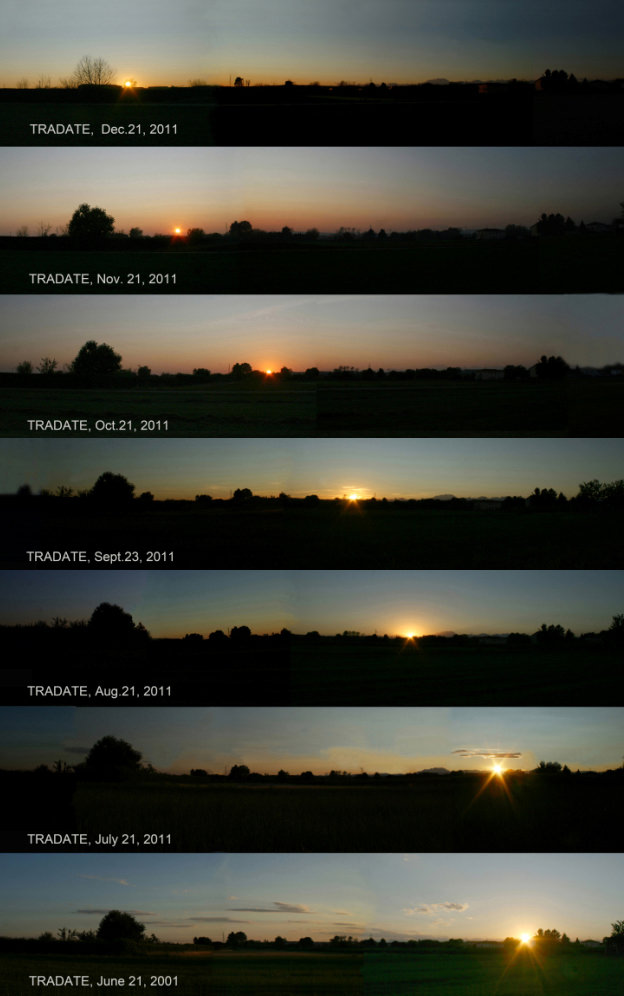[/caption]
You’ve likely heard the phrase “axial tilt is the reason for the seasons” and here’s a great depiction of that axial axiom. A group of Italian amateur astronomers, the Gruppo Astronomico Tradatese (GAT), have been trying for a couple of years to take images of the Sun setting from the same location on the 21st of the month for several months in a row to show the link between the changing seasons and the movement of the Sun in our sky. The group specializes in outreach to schools and had a goal creating a mosaic of sunsets in 2009, the International Year of Astronomy. However, due to cloudy skies, they weren’t able to successfully obtain the sunset images until the second half of 2011.
“The availability of clear sky for seven dates around the 20-22 of each month starting from June was a crucial necessity,” Cesare Guaita, GAT President wrote to Universe Today. “Starting from 2009, we had to wait up to the second half of year 2011 for the right situation.”
These images of the Italian horizon at approximately 45°42’44” latitude and 8°55’52” longitude shows an Alpine mountain (Monte Rosa, 4634 m high) and trees changing in appearance with the changes of the season.
“As you can see, the sunset is located far away on the right of Rosa Mount at the summer solstice and far away on the left of the Rosa Mount at the winter solstice,” Guaita noted.
Each single picture is a mosaic of 2-3 frames, with the last picture (shown on top) taken on Dec 21, 2011 at 16:30 local time.
This would be a great project for any astronomy group or class. Congratulazioni to the members of the GAT, and we thank them for sharing their mosaic with Universe Today!



